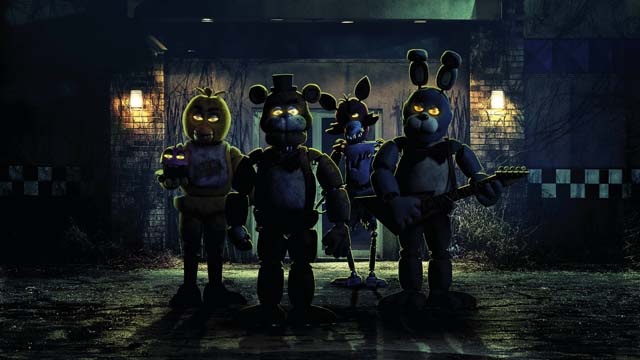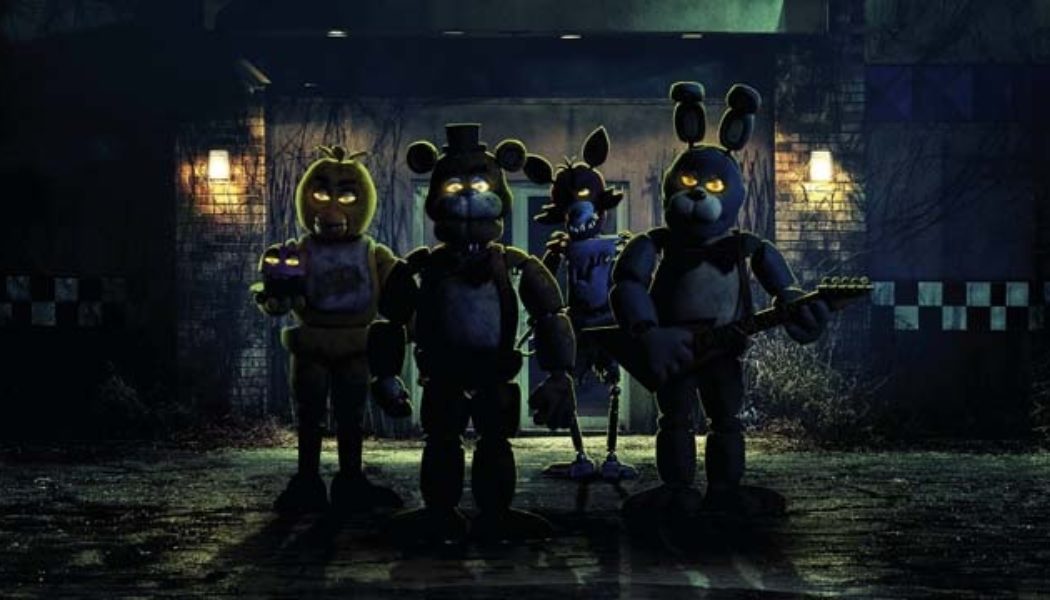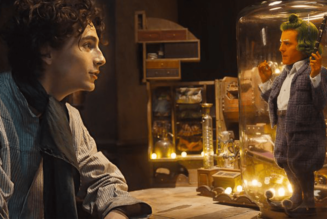
★★★
Directed by Emma Tammi, Five Nights at Freddy’s takes audiences on a thrilling ride within the eerie confines of an abandoned theme restaurant, Freddy Fazbear’s Pizzeria. The film revolves around Mike, played by Josh Hutcherson, a young man grappling with a rough past who shoulders the responsibility of caring for his younger sister, Abby. A traumatic memory from over a decade ago still haunts him, and the threat of losing custody of Abby hangs over his head. To secure their future, Mike accepts a job as a night security guard at Freddy’s, setting the stage for a journey of suspense and the supernatural.
This cinematic take is rooted in the popular video game franchise that took the gaming world by storm in 2014. Five Nights at Freddy’s ambitiously tries to cater to a diverse audience, drawing in horror enthusiasts, avid gamers, and those nostalgic for places like Chuck E. Cheese’s. However, it’s the gaming community that will likely find the most pleasure from this adaptation, given its deep connections to the source material. The film dives much deeper into its narrative than the initial trailers suggested, offering to deliver more than a superficial story about menacing animatronics. It attempts to weave a heartfelt storyline into the horror narrative, exploring a brother’s quest to avenge his sibling’s abduction, adding a layer of emotional depth to the story.
While the film’s premise is undoubtedly engaging, it has its share of shortcomings. The quality of the dialogue occasionally wavers, edging into the realm of cheesiness, which can, at times, hurt the authenticity of the emotional moments. Nevertheless, the film’s likely deliberate choice to keep dialogue minimal, allows more focus on animatronic action. Numerous details contribute effectively to the film’s eerie atmosphere. For instance, the pixel-heavy opening credits immediately evoke the essence of a video game adaptation. The musical score strikes a fine balance between childlike whimsy and haunting undertones, effectively complementing the blend of horror with elements of childlike imagination.
One of the standout features of Five Nights at Freddy’s is the creative editing, characterized by the thoughtful use of transitions that help the cinematic experience. Jump cuts, often seen as necessary for any horror film, are executed with precision, serving both the horror and comedic elements effectively. The film’s pacing aligns appropriately with the horror genre, ensuring that it remains consistently engaging, never allowing the audience to lose interest.
The audience’s reaction to the film may largely depend on their familiarity with the video game. Enthusiasts of the game will undoubtedly find much to delight in – surprise cameos and the exhilaration of witnessing their beloved animatronic characters on the big screen. In contrast, viewers approaching the movie without prior knowledge of the game may experience a distinct narrative and emotional disjunction. It might be challenging for them to take the main antagonist seriously, and certain instances of cheesy dialogue might provoke cringes. However, it’s important to remember that the filmmakers likely had a particular audience in mind, the dedicated gaming community. From this perspective, it’s clear they have successfully met their intended goal.
In conclusion, the filmmakers did a fine job adapting the iconic video game franchise, delivering a fun cinematic experience. While it has its flaws, particularly in the dialogue, it remains a testament to its gaming origins. Gamers will find it immersive, while other viewers can enjoy it as amusing entertainment. Ultimately, it invites any audience into a world of fear and nostalgia, proving to be a thrilling ride.









